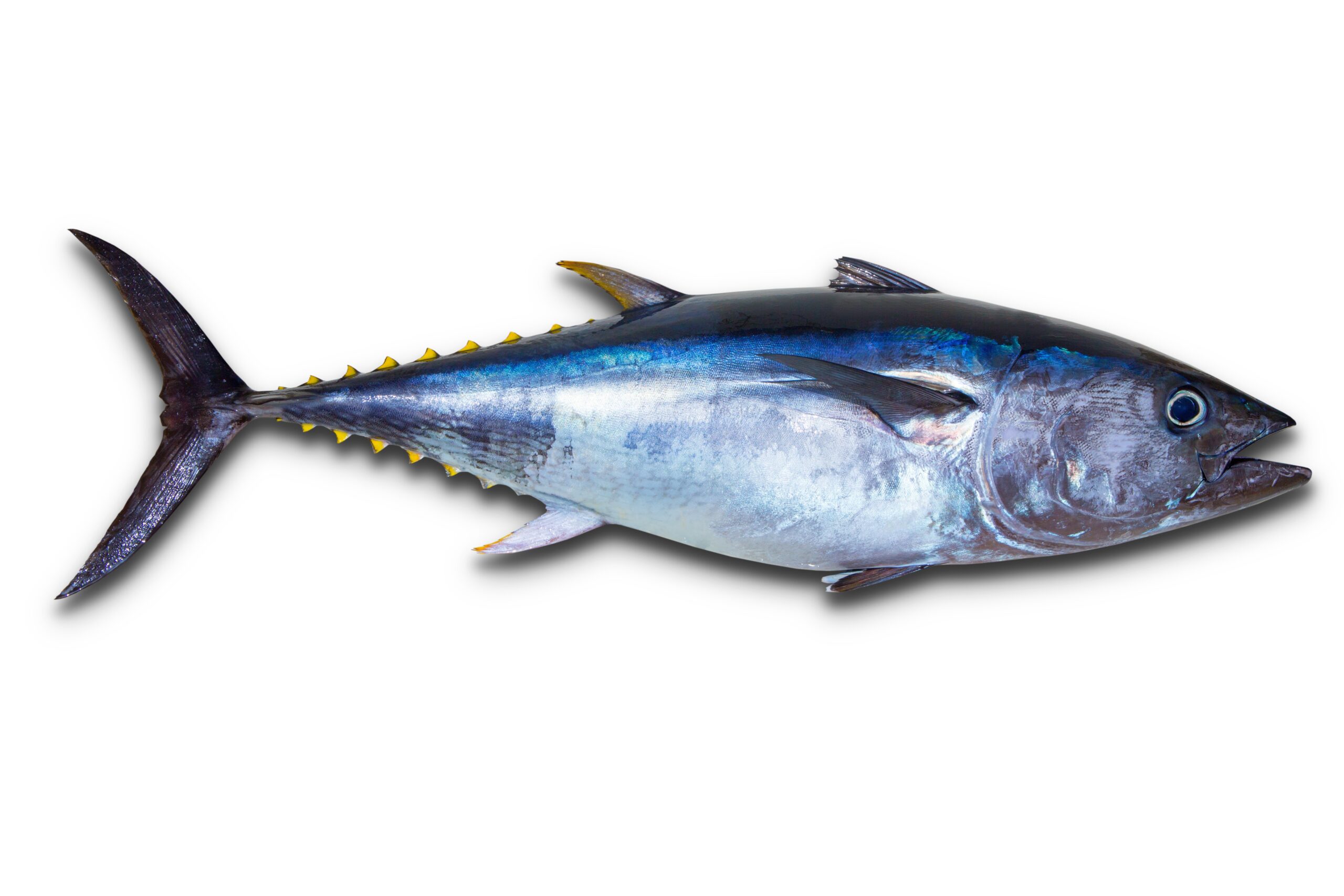Tuna is a popular seafood choice for many people. It is a good source of protein and omega-3 fatty acids, and it can be prepared in a variety of ways. There are many different types of tuna, each with its own unique flavour and texture.
Tuna are highly in-demand fish that inhabit both fresh and saltwater environments. They are renowned for their exceptional nutritional value and delectable taste. Within the tuna family, there exist over 13 distinct species, each possessing its own unique characteristics and qualities.
In this article, we will dive into the fascinating world of tuna, exploring the diverse range of species that captivate the palates of seafood enthusiasts worldwide.
- 15 Types of Tuna
- 1. Albacore Tuna: Thunnus alalunga
- 2. Bigeye Tuna: Thunnus obesus
- 3. Bluefin Tuna: Thunnus thynnus
- 4. Skipjack Tuna: Katsuwonus pelamis
- 5. Yellowfin Tuna: Thunnus albacares
- 6. Blackfin Tuna: Thunnus atlanticus
- 7. Longtail Tuna: Thunnus tonggol
- 8. Southern Bluefin Tuna: Thunnus maccoyii
- 9. Northern Bluefin Tuna: Thunnus orientalis
- 10. Bullet Tuna: Auxis rochei
- 11. Kawakawa: Euthynnus affinis
- 12. Little Tunny: Euthynnus alletteratus
- 13. Slender Tuna: Allothunnus fallai
- 14. Frigate Tuna: Auxis hazard
- Tuna: A Fascinating Fish of the Open Ocean
- Tuna: A Nutritional Powerhouse
- A good source of protein, omega-3 fatty acids, and selenium
- Protein
- Omega-3 fatty acids
- Selenium
- Tuna contains High Levels of Mercury
- Conclusion
- FAQs:
- What is the most popular type of tuna?
- What is the healthiest type of tuna?
- How much tuna should I eat per week?
- What are some health benefits of eating tuna?
- What are some risks of eating tuna?
- What is the most expensive type of tuna?
- Where can I buy tuna?
- What is the best way to cook tuna?
- How much tuna is safe to eat?
15 Types of Tuna
1. Albacore Tuna: Thunnus alalunga
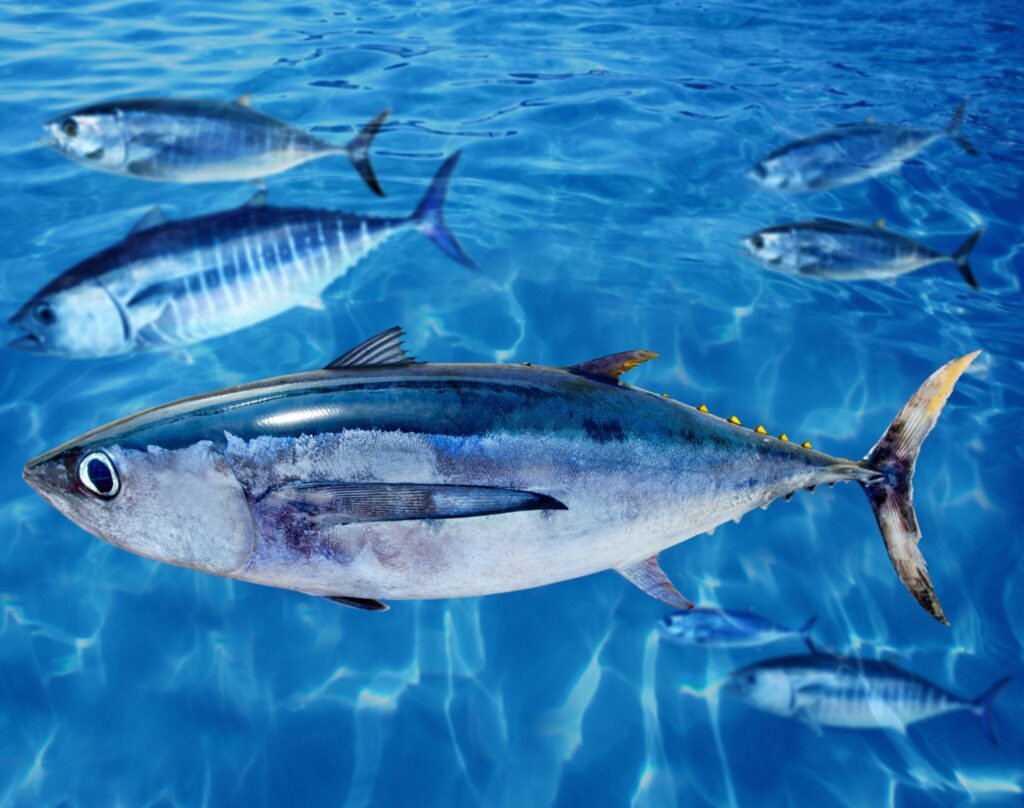
Albacore tuna, a medium-sized species, can be found dwelling in both the Atlantic and Pacific Oceans. Renowned for their mild flavour and firm, succulent flesh, they offer a delightful seafood experience. Whether grilled, seared, or served raw in salads, albacore tuna consistently satisfies the discerning taste buds of seafood aficionados.
2. Bigeye Tuna: Thunnus obesus
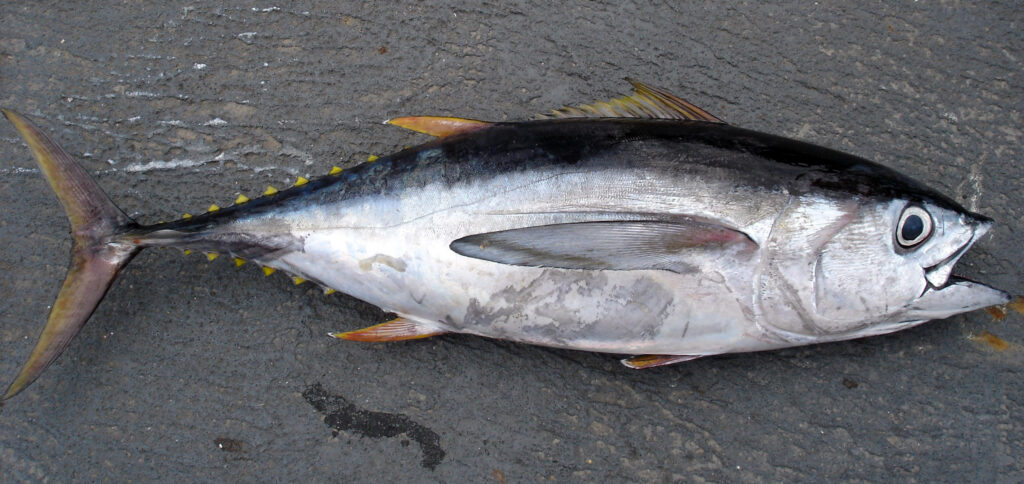
With their magnificent presence, bigeye tuna reign as one of the largest tuna species, thriving in tropical and subtropical waters. Characterized by their prominent eyes and dark-coloured flesh, these majestic creatures boast a reputation for providing an unparalleled gastronomic delight. Their robust flavour and tender meat make them a favoured choice for culinary masterpieces.
3. Bluefin Tuna: Thunnus thynnus
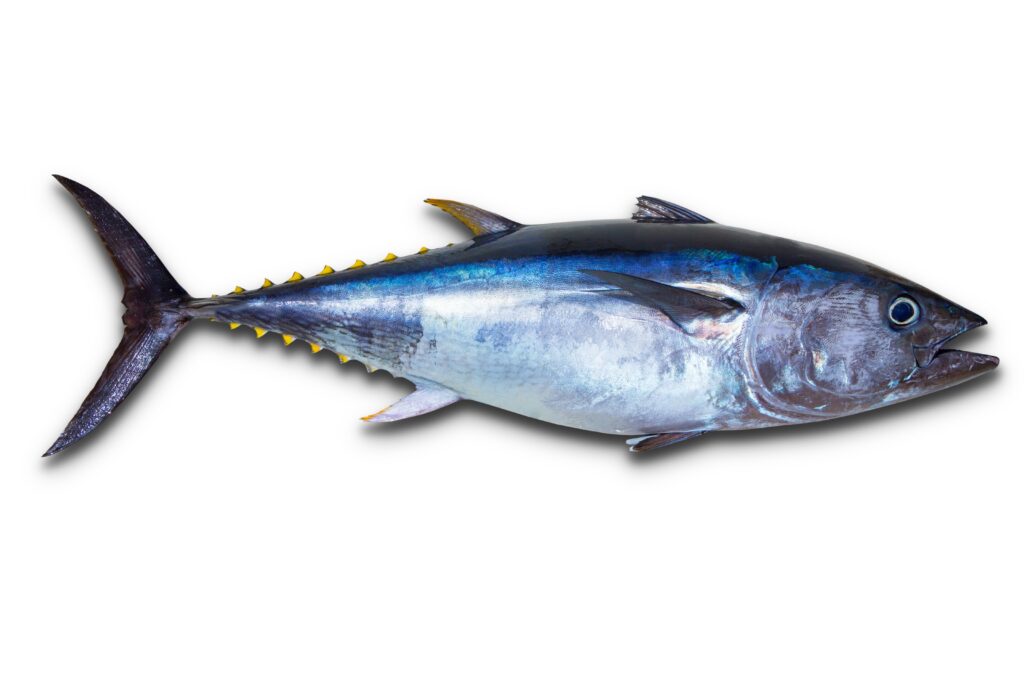
The epitome of tuna grandeur, bluefin tuna holds the distinction of being the largest species in the tuna family. Reaching astonishing lengths of up to 10 feet and weighing over 1,000 pounds, they command attention. Their meat, renowned for its exceptional quality, finds its way into the world of sushi and sashimi, where it delights connoisseurs with its exquisite taste and smooth texture.
4. Skipjack Tuna: Katsuwonus pelamis

Within the realm of smaller tuna species, skipjack tuna thrives in tropical and subtropical waters. Recognizable by its vibrant yellow flesh, skipjack tuna often finds itself destined for the shelves of canned tuna. Its versatility and distinct taste make it a popular choice for salads, sandwiches, and various culinary creations, adding a burst of flavour to any dish.
5. Yellowfin Tuna: Thunnus albacares
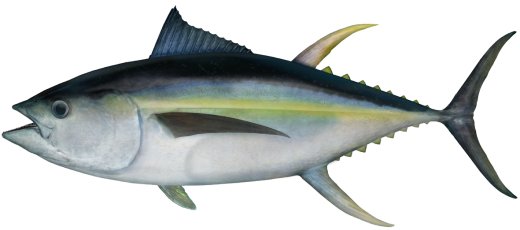
Residing in tropical and subtropical waters, yellowfin tuna charms with its distinctive yellow fins and firm, succulent flesh. This medium-sized species has gained popularity among seafood enthusiasts due to its versatility in the kitchen. Whether seared, grilled, or used as the star ingredient in a poke bowl, yellowfin tuna never fails to deliver a memorable dining experience.
6. Blackfin Tuna: Thunnus atlanticus
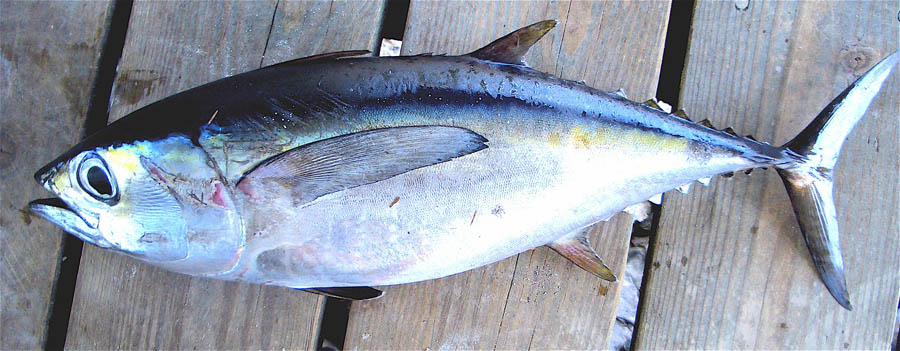
Thriving in warm and tropical waters, blackfin tuna stands out with its dark flesh and mild flavour. Although smaller in size compared to other tuna species, its culinary appeal remains undeniable. Whether featured in sushi rolls, grilled to perfection, or transformed into a delectable ceviche, blackfin tuna showcases its versatility while satisfying even the most discerning palates.
7. Longtail Tuna: Thunnus tonggol
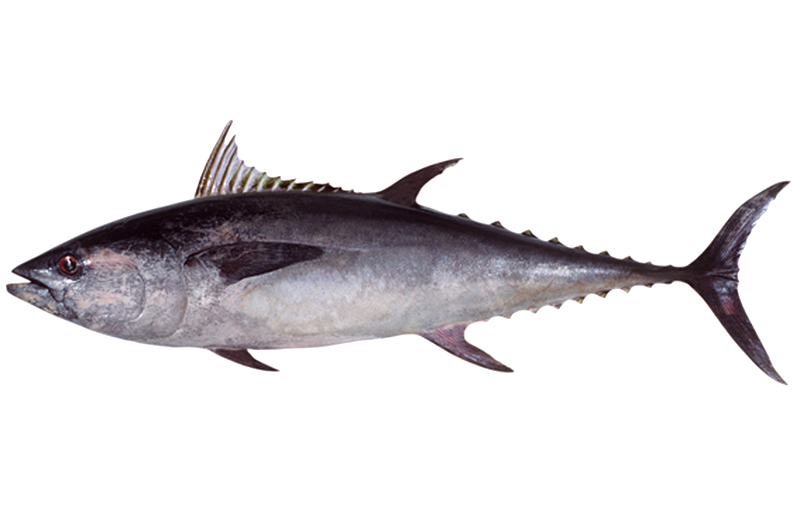
Inhabiting tropical and subtropical waters, longtail tuna captivates with its elongated tail and dark-coloured flesh. While not as widely recognized as its larger counterparts, this medium-sized species offers a unique seafood experience. Its tender meat lends itself well to grilling, allowing the distinct flavours to shine through and delight the taste buds of seafood enthusiasts.
8. Southern Bluefin Tuna: Thunnus maccoyii

Found in the southern hemisphere, the majestic southern bluefin tuna is renowned for its exceptional meat quality. Often revered as a prized ingredient in sushi and sashimi, its buttery texture and rich flavour create an unrivalled gustatory experience. With its prominence in high-end culinary establishments, this species has secured a place among the most sought-after delicacies.
9. Northern Bluefin Tuna: Thunnus orientalis

Residing in the northern hemisphere, the northern bluefin tuna shares its southern counterpart’s remarkable qualities. Its high-quality meat and affinity for sushi and sashimi preparations make it a cherished ingredient in the culinary world. Whether enjoyed as a standalone delicacy or incorporated into a masterfully crafted dish, the northern bluefin tuna delivers an unforgettable culinary journey.
10. Bullet Tuna: Auxis rochei

Small in size but mighty in taste, bullet tuna thrives in tropical and subtropical waters. Its distinct bullet-shaped body and dark flesh set it apart from other tuna species. While often overlooked, bullet tuna offers a delectable experience when grilled, broiled, or featured in Asian-inspired dishes. Its robust flavour profile surprises and delights those who venture to explore its culinary potential.
11. Kawakawa: Euthynnus affinis

Found in tropical and subtropical waters, kawakawa boasts dark flesh and a mild flavour. This small tuna species presents a versatile option for seafood enthusiasts seeking a delicate seafood experience. From pan-searing to marinating in zesty citrus dressings, kawakawa showcases its adaptability in various culinary creations, adding depth to the dining table.
12. Little Tunny: Euthynnus alletteratus
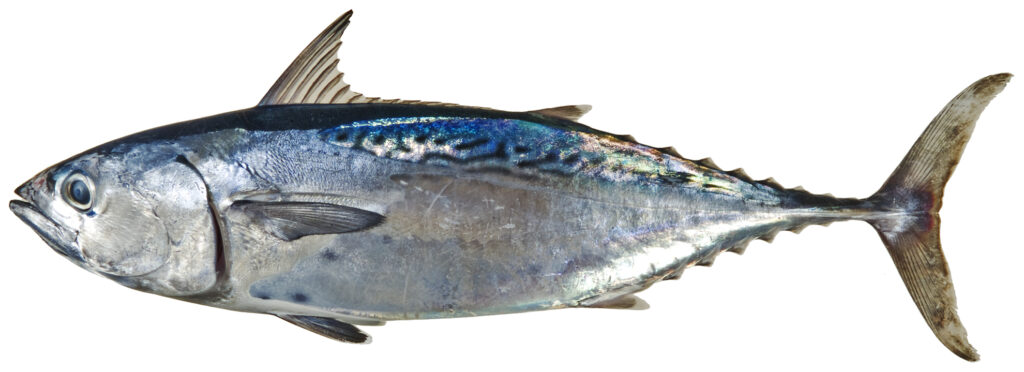
Thriving in warm and tropical waters, the little tunny exudes simplicity and elegance. With its dark flesh and mild flavour, this small tuna species appeals to those seeking a milder seafood taste. Grilled to perfection or incorporated into salads, the little tunny consistently delivers a delightful culinary encounter, epitomizing the notion that sometimes, less is truly more.
13. Slender Tuna: Allothunnus fallai
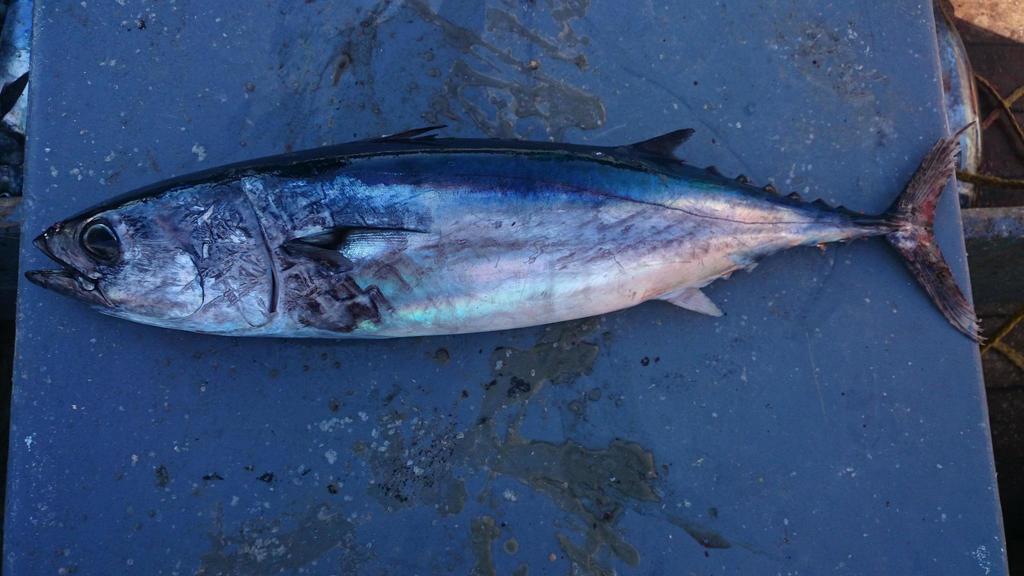
Residing in warm and tropical waters, slender tuna lives up to its name with its sleek and elongated body. Its dark flesh further distinguishes it from other tuna species, contributing to its allure. Gracing the plates of seafood enthusiasts, slender tuna offers a unique culinary experience, where its tender meat takes centre stage, providing a delightful interplay of flavours.
14. Frigate Tuna: Auxis hazard

Thriving in tropical and subtropical waters, frigate tuna impresses with its long, slender body and dark-coloured flesh. Although often overshadowed by larger tuna species, it presents a promising option for those seeking a culinary adventure. Whether featured in ceviche, stir-fries, or creative sushi rolls, frigate tuna surprises the palate with its nuanced flavour profile and delicate texture.
Tuna: A Fascinating Fish of the Open Ocean
Speed of Tuna
Tuna is a remarkable pelagic fish that resides in the vast expanses of the open ocean. With its sleek and streamlined body, it has evolved into a fast-swimming marvel, capable of reaching incredible speeds of up to 60 miles per hour.
This agility allows tuna to traverse great distances in search of sustenance, making it a migratory species that embark on remarkable journeys.
Popular food fish
As a popular food fish, tuna has captivated the palates of people across the globe. Its succulent flesh and rich flavour have made it a sought-after delicacy, finding its way onto the plates of seafood enthusiasts in various forms—be it grilled, seared, or even enjoyed raw as sushi and sashimi.
Tuna’s versatility in culinary preparations has contributed to its widespread popularity and prominence in cuisines worldwide.
Sustainable food fish
It’s important to note that tuna, despite its immense demand, is considered a sustainable food fish. This means that efforts are made to ensure the conservation of tuna populations and minimize the impact of fishing on the marine ecosystem.
Additionally, advancements in aquaculture have enabled the successful farming of tuna in captivity, further alleviating the pressure on wild stocks and providing a viable source of this delectable seafood.
A Migratory Fish
The migratory nature of tuna, driven by its quest for nourishment, reveals an astonishing fact about this magnificent fish—it can cover vast distances while crossing entire oceans.
Such extensive journeys demonstrate the remarkable adaptability of tuna to survive and thrive in the ever-changing marine environment.
It is during these migrations that tuna encounters an abundance of prey, including smaller fish, squid, and crustaceans, which contribute to its rich diet and nutritional value.
Large quantity
Furthermore, the high demand for tuna has prompted commercial fishing operations to catch this fish in large quantities worldwide.
To meet this demand sustainably, responsible fishing practices, such as size and catch limits, have been implemented to ensure the long-term viability of tuna populations.
Additionally, technological advancements, such as improved fishing gear and monitoring systems, aid in reducing bycatch and protecting non-target species.
Tuna: A Nutritional Powerhouse
A good source of protein, omega-3 fatty acids, and selenium
Tuna is not just a delectable fish; it also offers an array of health benefits due to its impressive nutritional profile. This popular seafood is a good source of protein, omega-3 fatty acids, and selenium, making it a valuable addition to a well-balanced diet.
Protein
Protein is an essential macronutrient that plays a crucial role in various bodily functions. Tuna provides a generous amount of high-quality protein, aiding in the growth and repair of tissues, as well as supporting the development of strong muscles.
Omega-3 fatty acids
One of the standout components of tuna is its abundance of omega-3 fatty acids. These healthy fats have been extensively studied for their potential benefits to heart and brain health.
Omega-3 fatty acids can help reduce inflammation, support cardiovascular function, and promote optimal brain function. Regular consumption of tuna can contribute to these positive effects and support overall well-being.
Selenium
Another notable nutrient found in tuna is selenium, a powerful antioxidant that plays a key role in protecting cells from damage. Selenium works alongside other antioxidants to neutralize harmful free radicals in the body, which can reduce the risk of chronic diseases and promote a healthy immune system.
Tuna contains High Levels of Mercury
While tuna offers numerous health advantages, it’s important to be aware of the potential presence of mercury in certain species. Mercury is a heavy metal that can accumulate in the bodies of fish, including tuna. Large predatory fish, like some species of tuna, tend to accumulate higher levels of mercury due to their position in the food chain.
To reduce the risks associated with mercury, it is recommended to consume tuna in moderation, especially for vulnerable populations such as pregnant women, nursing mothers, and young children. Opting for smaller species of tuna, such as skipjack or albacore, can also help reduce mercury exposure.
Conclusion
The world of tuna encompasses a vast array of flavours, textures, and culinary possibilities. From the majestic bluefin tuna to the often-overlooked slender tuna, each species brings its own unique qualities to the dining table.
Whether indulging in high-end sushi or enjoying a simple tuna salad, exploring the diverse types of tuna allows us to appreciate the intricacies of these magnificent fish and savour the wonders of the sea.
Its swift swimming abilities, long-distance migrations, and delectable flavour make it a prized catch.
Yet, the sustainability of tuna remains at the forefront of conservation efforts, ensuring that future generations can continue to enjoy this magnificent fish. So, the next time you savour a tuna dish, take a moment to appreciate the remarkable journey this fish has undertaken to grace your plate.
Overall, tuna can be a valuable addition to a healthy diet, providing a rich source of protein, omega-3 fatty acids, and selenium. By enjoying tuna in moderation and selecting lower-mercury options, individuals can reap the nutritional benefits this fish has to offer while minimizing potential risks.
So, include tuna in your meal plan and savour its delicious taste while nourishing your body with its impressive array of nutrients.
FAQs:
What is the most popular type of tuna?
The most popular type of tuna is albacore tuna. It is known for its mild flavour and firm flesh.
What is the healthiest type of tuna?
The healthiest type of tuna is albacore tuna. It is a good source of protein, omega-3 fatty acids, and selenium.
How much tuna should I eat per week?
The American Heart Association recommends eating no more than 12 ounces of albacore tuna or 6 ounces of skipjack or yellowfin tuna per week.
What are some health benefits of eating tuna?
Tuna is a good source of protein, omega-3 fatty acids, and selenium. Omega-3 fatty acids are beneficial for heart health and brain health. Selenium is an antioxidant that can help protect cells from damage.
What are some risks of eating tuna?
Tuna can contain high levels of mercury. Mercury is a toxin that can damage the brain and nervous system. Pregnant women and women who are trying to get pregnant should avoid eating tuna because mercury can harm a developing fetus.
What is the most expensive type of tuna?
The most expensive type of tuna is bluefin tuna. It is highly prized for its rich flavour and firm texture.
Where can I buy tuna?
Tuna can be bought at most grocery stores. It is also available canned, frozen, and fresh.
What is the best way to cook tuna?
The best way to cook tuna depends on the type of tuna. Albacore tuna can be grilled, baked, or poached. Bigeye tuna can be grilled, seared, or broiled. Bluefin tuna is best suited for sushi and sashimi. Skipjack tuna can be canned, smoked, or grilled. Yellowfin tuna can be grilled, seared, or broiled.
How much tuna is safe to eat?
The Food and Drug Administration (FDA) recommends that adults eat no more than 12 ounces of albacore tuna per week and no more than 6 ounces of other types of tuna per week.

